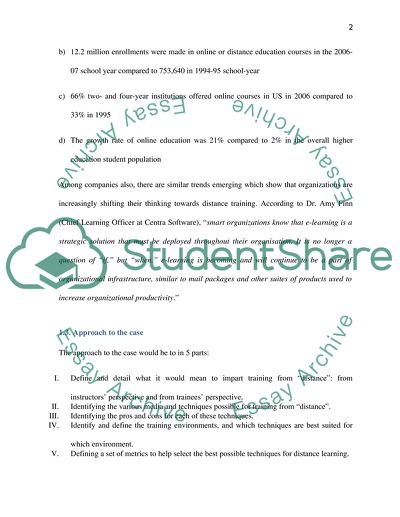Cite this document
(“Distance Learning Techniques in Organizations Essay”, n.d.)
Retrieved from https://studentshare.org/education/1422016-edu-636-ip-4
Retrieved from https://studentshare.org/education/1422016-edu-636-ip-4
(Distance Learning Techniques in Organizations Essay)
https://studentshare.org/education/1422016-edu-636-ip-4.
https://studentshare.org/education/1422016-edu-636-ip-4.
“Distance Learning Techniques in Organizations Essay”, n.d. https://studentshare.org/education/1422016-edu-636-ip-4.


